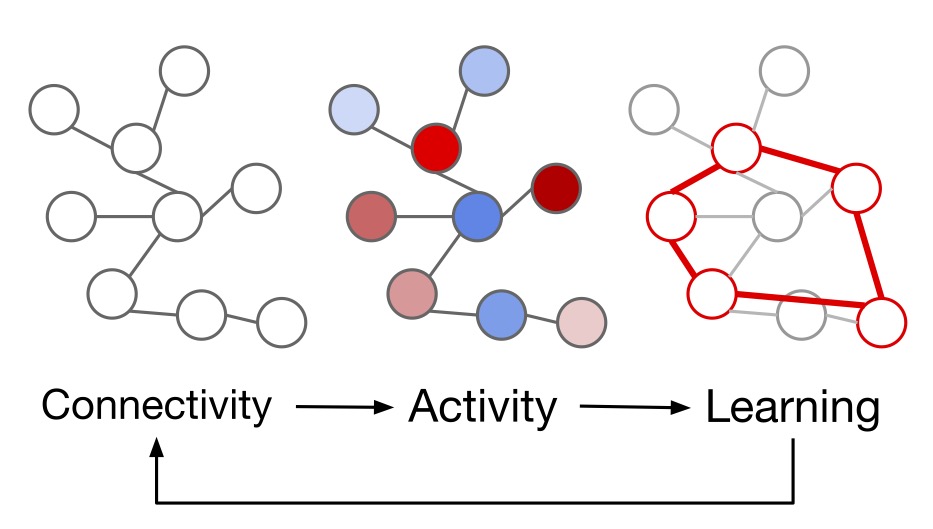Computational Analysis of Neural Dynamics: Sensorimotor processing and cognitive function in our brains emerge as a result of the coordinated activity of billions of neurons interconnected by trillions of connections. What key algorithms underlie the emergence of thoughts and actions in this large-scale, complex system? What computational mechanisms enable neural circuits to represent external information and to learn and adapt to the changing environment? Our goal is to address these fundamental questions in neuroscience by constructing computational models of neuronal networks and conducting theory-guided analyses on large-scale datasets obtained from the brain.

Biologically-Constrained Computational Modelling: We develop computational models of neuronal networks that are informed and constrained by biological parameters. These models help to elucidate experimental data recorded from neural circuits and offer novel predictions that can be experimentally tested. Specifically, our goal is to bridge the gap between the structural connectivity of neuronal networks and their functional properties, which emerge through activity dynamics and dynamic network reorganisation resulting from plasticity and learning. This modelling approach thus encompasses the interconnected aspects of network connectivity, activity dynamics, and learning.

Theory-Guided Data Analysis: We use mathematical analysis, machine learning techniques, and statistical methods to analyse the population activity of neuronal networks. In doing so, we collaborate closely with experimentalists, to have a bidirectional dialogue between theory and experiment. We develop computational frameworks that are informed by and tailored to experimental data, and, in turn, inform and guide the data analysis and experimental design processes through theory. This approach offers a more promising avenue for interpreting complex neural activity recorded under naturalistic conditions, and aids in the reduction of the high-dimensional parameter space to low-dimensional, relevant features.

Perturbative Analysis of Brain Networks: Recent advances in neurotechnology have allowed experimentalists to go beyond observational techniques. We can now interact with neural circuits in a bidirectional manner, by targeted stimulation of specific subsets of neurons and reading their activity. However, understanding the relationship between input stimulations and output responses is not always straightforward, given the intricate interactions within highly interconnected neuronal networks. We develop computational frameworks designed to complement and guide experimental interrogation of neural circuits, which can also aid in optimising neurostimulation protocols.

